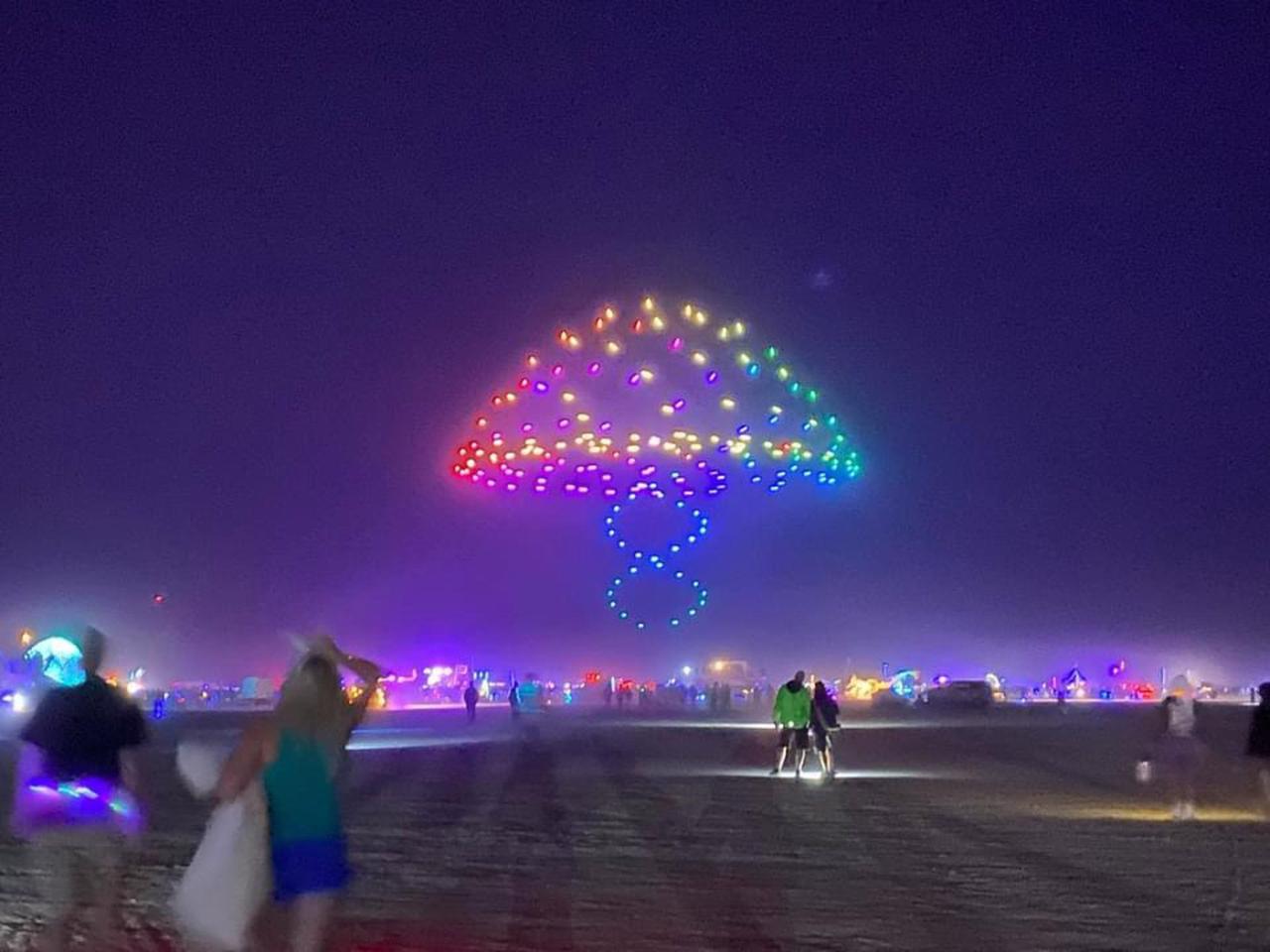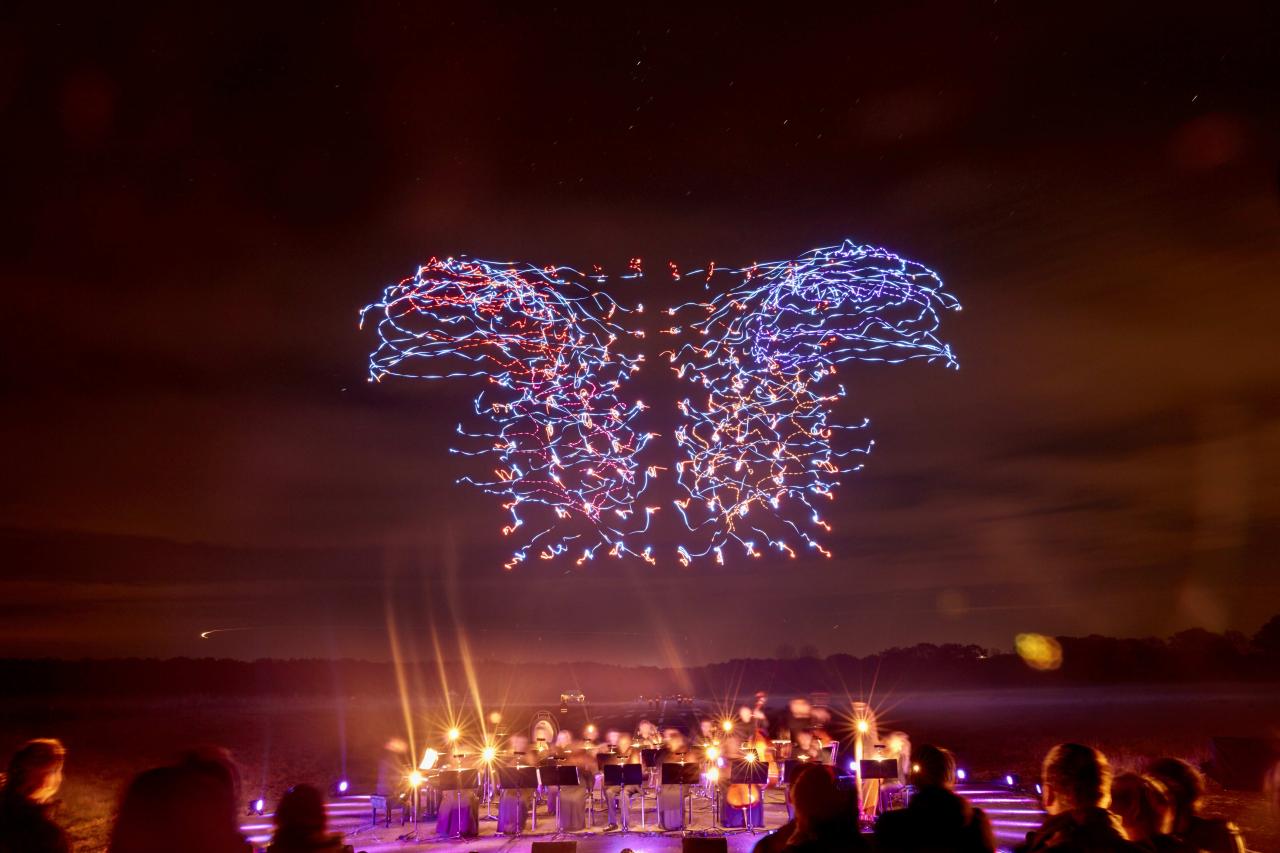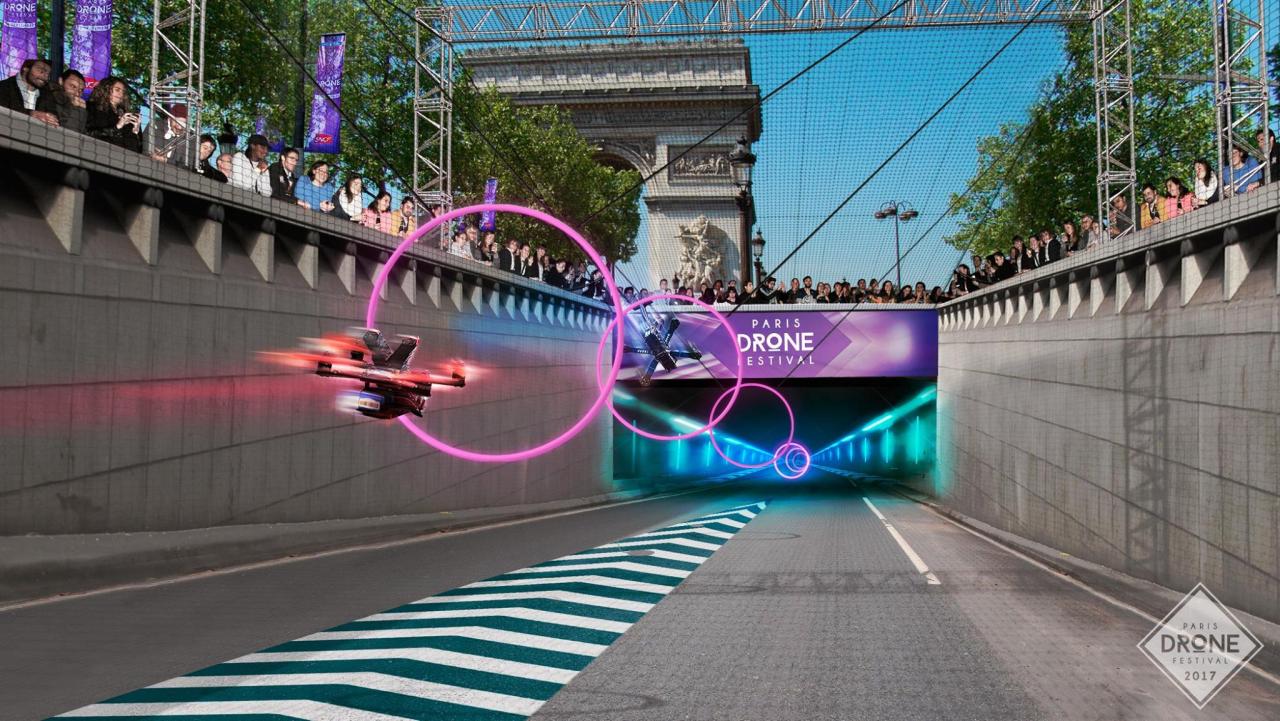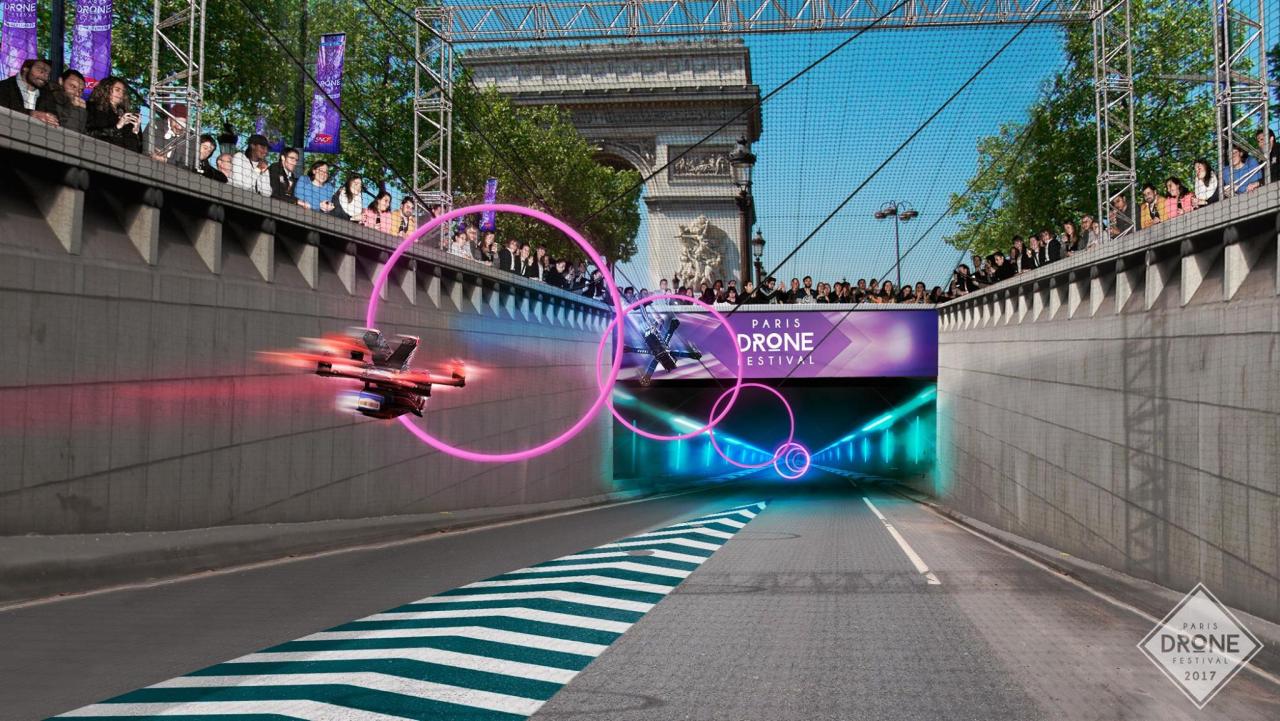Florida Drone Show: Imagine breathtaking aerial displays illuminating Florida’s stunning landscapes. This guide dives into the world of Florida drone shows, exploring everything from the necessary permits and regulations to the technology and creative artistry behind these mesmerizing spectacles. We’ll cover ideal locations, diverse show types, safety protocols, and the economic impact these shows have on the state. Get ready to soar into the exciting future of Florida drone shows!
From the meticulous planning and FAA regulations to the awe-inspiring choreography and technological advancements, we’ll explore every facet of bringing these vibrant aerial productions to life. We’ll also examine the economic benefits, marketing strategies, and emerging trends shaping the future of this captivating industry. This guide aims to provide a complete and engaging overview for both enthusiasts and professionals alike.
Florida Drone Show Regulations and Permits
Navigating the regulatory landscape for drone shows in Florida requires understanding both state and federal guidelines. This section details the permit acquisition process, relevant FAA regulations, and differences in permit requirements based on show type.
Obtaining Permits for Florida Drone Shows
The process for obtaining permits to conduct drone shows in Florida involves several steps, primarily involving the Federal Aviation Administration (FAA) and potentially local authorities depending on the location and scale of the event. Applicants must first register their drones with the FAA and obtain a Part 107 Remote Pilot Certificate. Then, they need to file a Notice to Air Missions (NOTAM) to inform other airspace users of the planned drone activity.
Finally, depending on the show’s location and size, permits from local municipalities or counties might also be necessary. The specific requirements can vary greatly, so contacting the relevant authorities early in the planning process is crucial.
Relevant FAA Regulations for Florida Drone Shows
The FAA’s Part 107 regulations govern the operation of drones in the United States, including Florida. Key regulations relevant to drone shows include visual line-of-sight requirements, maximum altitude limitations, and operational restrictions near airports and other sensitive areas. Furthermore, drone shows often require waivers or exemptions from certain Part 107 rules, particularly regarding the operation of multiple drones simultaneously beyond visual line of sight.
Understanding and adhering to these regulations is paramount for legal and safe operation.
Florida drone shows are becoming increasingly popular, offering dazzling light displays. If you’re looking to learn more about the technology behind these amazing spectacles, check out the impressive drones from sky elements drones ; their innovative designs often feature in these incredible Florida events. Seeing the quality of their drones really puts the Florida shows into a new perspective!
Permit Requirements for Different Types of Drone Shows
Permit requirements can differ significantly depending on whether the drone show is public or private. Public shows, involving large audiences, necessitate more stringent permits and safety protocols, often requiring coordination with local law enforcement and emergency services. Private shows, on the other hand, may have less stringent requirements, but still need to comply with FAA regulations. The size and complexity of the show will also influence the permit requirements, with larger, more complex shows requiring more extensive documentation and approvals.
Step-by-Step Guide for the Permit Application Process
- Register your drones with the FAA.
- Obtain a Part 107 Remote Pilot Certificate.
- File a Notice to Air Missions (NOTAM).
- Contact local authorities (municipalities, counties) to inquire about any necessary permits.
- Submit all required documentation to the relevant authorities.
- Obtain all necessary approvals before commencing drone show operations.
Popular Locations for Florida Drone Shows
Florida offers a diverse range of locations ideal for drone shows, balancing scenic beauty with practical considerations. The selection of a suitable location depends on factors like airspace availability, accessibility, and the show’s theme and scale.
Ideal Locations for Drone Shows in Florida
| Location Name | Reasons for Selection | Potential Challenges | Mitigation Strategies |
|---|---|---|---|
| St. Augustine Beach | Stunning coastal views, relatively open airspace, ample spectator space. | Potential for strong winds, nearby air traffic. | Schedule show during periods of calm winds, coordinate with air traffic control. |
| Kennedy Space Center Visitor Complex | Iconic backdrop, ample space, existing infrastructure. | Restricted airspace, potential for high security protocols. | Secure necessary permissions well in advance, work closely with KSC security. |
| Everglades National Park | Unique natural beauty, vast open spaces. | Challenging terrain, potential for wildlife interference. | Conduct thorough site surveys, establish clear flight paths avoiding wildlife habitats. |
| Clearwater Beach | Popular tourist destination, beautiful beachfront, good accessibility. | Crowded areas, potential for interference from other aircraft. | Coordinate with local authorities, implement robust crowd control measures. |
| Orlando (Theme Park Area) | Large open spaces, potentially collaborating with theme parks. | Complex airspace due to theme park attractions and airports. | Close coordination with air traffic control, detailed flight plans, and potentially utilizing designated airspace. |
Logistical considerations for each location involve factors such as site preparation, power supply, communication infrastructure, and transportation of equipment and personnel. Thorough planning and coordination with local authorities are essential for successful execution.
Types of Drone Shows Performed in Florida

Florida’s drone show landscape is diverse, showcasing different show types with unique characteristics in terms of technical requirements, creative design, and audience engagement.
Distinct Types of Florida Drone Shows
Three common types of drone shows in Florida include:
- Synchronized Light Shows: These shows utilize drones equipped with bright LED lights to create dynamic patterns and formations in the night sky. The choreography focuses on visual storytelling and artistic expression through light and movement.
- Storytelling Shows: These shows integrate narrative elements, often using drones to depict characters or scenes from a story or theme. This requires complex programming and coordination of drone movements to create a cohesive and engaging narrative.
- Hybrid Shows: Combining elements of light shows and storytelling, hybrid shows offer a more complex and immersive experience. These shows often integrate other elements, such as music, pyrotechnics (with appropriate permits), or even projections, to create a multi-sensory spectacle.
Technical Requirements and Complexities
Synchronized light shows require precise programming and synchronization of numerous drones, demanding sophisticated software and robust communication systems. Storytelling shows add another layer of complexity, requiring intricate choreography and potentially the use of specialized cameras or sensors on the drones to capture and project visuals. Hybrid shows combine the technical challenges of both, often requiring a larger team and more extensive planning.
Creative Aspects of Drone Show Design
The creative design of each show type involves storytelling, choreography, and musical integration. Synchronized light shows emphasize visual artistry, while storytelling shows focus on narrative development and character representation through drone movements. Hybrid shows aim for a synergistic blend of both, creating a captivating and memorable experience for the audience. Music selection and synchronization are critical to enhancing the emotional impact of all types of shows.
Thinking about a dazzling nighttime spectacle? Florida’s got you covered! Check out the amazing light shows created by the innovative technology showcased at the florida drone show , where hundreds of drones paint the sky with breathtaking designs. These aren’t your grandpa’s fireworks; a Florida drone show is a truly modern marvel. You won’t be disappointed!
Drone Show Technology and Equipment Used in Florida
The technology and equipment used in Florida drone shows are constantly evolving, with advancements in drone capabilities, software, and control systems shaping the possibilities for more complex and spectacular displays.
Types of Drones Utilized in Florida Drone Shows
Florida drone shows commonly employ a variety of drones, often customized for specific show needs. These typically include quadcopter drones, known for their stability and maneuverability, and sometimes larger, heavier-lift drones for carrying more advanced lighting or projection systems. The choice of drone depends on factors such as payload capacity, flight time, and the desired level of precision and complexity in the choreography.
Role of Specialized Software and Hardware
Specialized software plays a crucial role in planning and executing drone shows. Software packages are used for choreography design, flight path planning, and real-time control of multiple drones. Hardware such as ground control stations, high-bandwidth communication systems, and specialized lighting systems are essential for managing the drones and creating visually stunning effects. Redundant systems are crucial for safety and reliability.
Hypothetical Drone Show Setup
A hypothetical drone show setup might include 50 quadcopter drones equipped with high-intensity LED lights, controlled by a ground control station using specialized software. The software would manage the drones’ flight paths, lighting sequences, and synchronization with a pre-recorded music track. Backup communication systems and power supplies would be included to ensure redundancy and prevent show interruptions. Additional hardware might include a weather monitoring system and a safety team equipped with emergency response equipment.
Safety and Security Measures in Florida Drone Shows
Prioritizing safety and security is paramount in Florida drone shows, requiring comprehensive protocols to protect both the audience and the drone operators. Risk mitigation strategies are crucial for ensuring a successful and incident-free event.
Essential Safety Protocols, Florida drone show
Essential safety protocols include pre-flight inspections of all drones, designated flight zones with clear boundaries, trained and experienced drone operators, emergency response plans, and crowd control measures. Clear communication channels between the ground control station and the safety team are vital. Weather monitoring is crucial, with contingency plans in place for adverse conditions.
Risk Mitigation Measures
Mitigation strategies for malfunctions involve redundant systems, regular maintenance, and backup drones. For weather conditions, contingency plans include postponing or canceling the show if necessary. Unauthorized access is mitigated through security personnel, perimeter fencing, and restricted airspace notifications. Emergency response plans include trained personnel, first aid kits, and communication with emergency services.
Emergency Response Plans
Emergency response plans should include procedures for handling drone malfunctions, accidents, medical emergencies, and adverse weather conditions. Designated personnel should be responsible for coordinating with emergency services and ensuring the safety of the audience and operators. Regular drills and training exercises are vital for ensuring effective response to potential incidents.
Economic Impact of Drone Shows in Florida: Florida Drone Show
Drone shows contribute significantly to Florida’s economy, particularly in the tourism and entertainment sectors. Their impact extends beyond direct revenue generation to include job creation and increased spending in local businesses.
Economic Benefits to Tourism and Entertainment
Drone shows attract tourists, boosting hotel occupancy, restaurant revenue, and spending on related activities. They offer a unique and memorable entertainment experience, enhancing Florida’s reputation as a destination for innovative and exciting events. The shows can be integrated into larger tourism packages, further amplifying their economic impact.
Job Creation and Revenue Generation
The drone show industry creates jobs in various sectors, including drone piloting, software development, event management, and marketing. Revenue is generated through ticket sales, sponsorships, and merchandise. The potential for economic growth is substantial, particularly as the technology advances and the popularity of drone shows increases.
Indirect Economic Impacts

Indirect economic impacts include increased spending in local businesses such as restaurants, hotels, and transportation services. Tourists attending drone shows often spend money on other activities and attractions in the surrounding areas, contributing to the overall economic vitality of the region. This multiplier effect significantly boosts the economic benefits of drone shows.
Marketing and Promotion of Florida Drone Shows
A successful marketing strategy is crucial for attracting audiences and generating revenue for Florida drone shows. This section Artikels a hypothetical marketing plan, including promotional materials and a sample video script.
Florida drone shows are becoming increasingly popular, offering spectacular nighttime displays. If you’re looking for a similar experience but closer to the Orlando area, check out the amazing orlando drone show ; it’s a great example of what these shows can offer. Then, compare the two shows to see which better suits your preference for a Florida drone show experience!
Marketing Strategy for a Hypothetical Drone Show
The marketing strategy would leverage social media platforms (Instagram, Facebook, TikTok), targeted advertising campaigns, partnerships with local tourism agencies, and collaborations with influencers. Pre-show buzz would be generated through teaser videos and behind-the-scenes content. Ticket sales would be streamlined through an online platform, offering various ticket tiers and packages.
Sample Promotional Video Script
The video would open with stunning visuals of Florida landscapes, transitioning to dynamic drone flight footage. The narration would highlight the show’s unique aspects, emphasizing the artistic choreography and storytelling. A call to action would encourage viewers to purchase tickets and experience the show firsthand. The video would conclude with a display of the show’s logo and website address.
Marketing Materials
Marketing materials would include brochures featuring high-quality images and descriptions of the show. Social media posts would showcase short video clips and behind-the-scenes content, creating excitement and engagement. Website banners and advertisements would provide details on ticket purchasing and show information. Partnerships with local businesses would offer cross-promotional opportunities, expanding reach and visibility.
Future Trends in Florida Drone Shows

The future of Florida drone shows promises exciting innovations driven by technological advancements and creative vision. Emerging technologies and evolving show design will further enhance audience engagement and experience.
Emerging Technologies Impacting Drone Shows
- AI-powered choreography: AI algorithms can generate complex and dynamic flight patterns, enabling more intricate and visually stunning shows.
- Autonomous drone swarms: Advanced swarm technologies allow for the coordinated movement of hundreds of drones, opening up new possibilities for large-scale, breathtaking displays.
- Integrated AR/VR experiences: Augmented and virtual reality technologies can enhance audience engagement by overlaying digital elements onto the real-world drone show, creating an immersive and interactive experience.
Innovation in Show Design and Audience Engagement
Future drone shows may incorporate interactive elements, allowing audiences to influence the show’s choreography or storyline in real-time. The use of personalized drones or projections can create a more intimate and tailored experience for each attendee. Advanced lighting technologies and synchronized music will continue to elevate the visual and emotional impact of the shows.
Enhancing the Attendee Experience
By integrating emerging technologies and creative show design, future drone shows in Florida can create an unforgettable and immersive experience. Interactive elements, personalized experiences, and advanced visual effects will elevate the entertainment value, attracting a wider audience and solidifying Florida’s position as a leading destination for innovative drone shows.
Conclusion
Florida drone shows are more than just captivating displays; they represent a dynamic intersection of technology, artistry, and economic opportunity. From the meticulous permit processes to the breathtaking choreography, every element contributes to an unforgettable experience. As technology continues to evolve, we can anticipate even more innovative and spectacular shows gracing Florida’s skies, boosting tourism, and fostering economic growth.
The future of Florida drone shows is bright, promising a dazzling spectacle for years to come.
FAQ Resource
How much does it cost to put on a drone show in Florida?
Costs vary greatly depending on the show’s scale, duration, number of drones, and other factors. Expect significant expenses for permits, equipment, software, operators, insurance, and marketing.
What are the typical weather restrictions for a Florida drone show?
High winds, heavy rain, and lightning are major concerns. Shows are often postponed or canceled if weather conditions pose safety risks to drones, operators, and spectators.
What kind of insurance is needed for a Florida drone show?
Comprehensive liability insurance is essential to cover potential damages or injuries. Specific requirements may vary depending on the show’s size and location.
Are there noise restrictions for drone shows in Florida?
Yes, noise levels are often regulated, particularly in residential areas. Organizers need to adhere to local noise ordinances and consider using quieter drones or implementing sound mitigation strategies.
